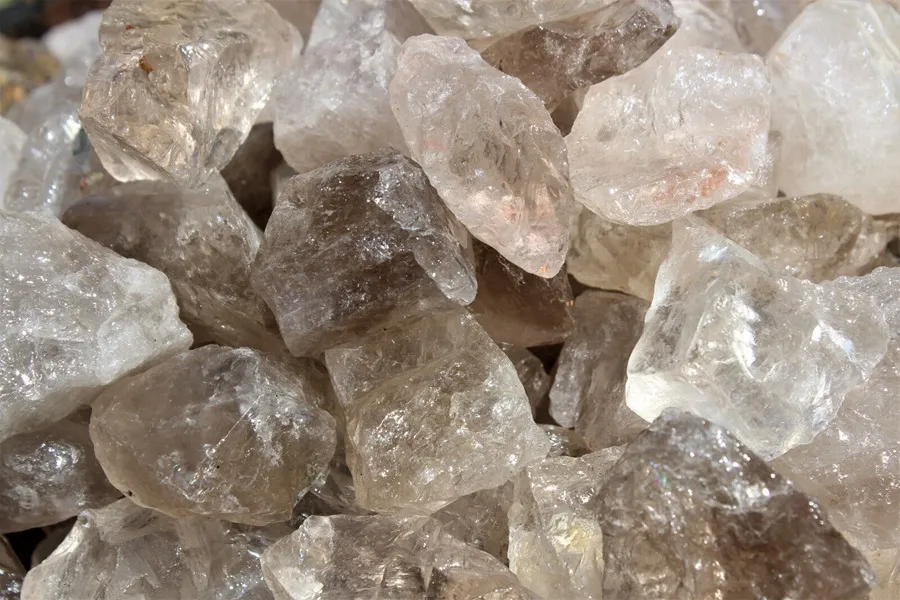Quartz
We’re here to answer your questions and provide assistance
Characteristics and Properties of Quartz
Quartz (SiO₂) is one of the most abundant and durable minerals in the Earth’s crust. Its unique combination of physical and chemical properties makes it highly versatile across a wide range of industries. Key characteristics include:
- Chemical Inertness: Quartz is chemically stable and resistant to corrosion, making it ideal for environments where reactivity must be minimized.
- High Melting Point: With a melting point of approximately 1,650°C, quartz can withstand extreme temperatures without losing its structural integrity.
- Hardness: Ranked 7 on the Mohs scale, quartz is highly resistant to abrasion and scratching, contributing to its durability.
- Transparency: Pure quartz can range from transparent to translucent, making it valuable in optical and decorative applications.
- Piezoelectric Properties: Quartz crystals exhibit piezoelectricity, converting mechanical pressure into electrical signals, which is critical in electronics.

Industrial Applications of Quartz
Quartz’s unique properties make it indispensable in various industries:
1. Glass Manufacturing
- Used as a primary ingredient in the production of high-quality glass, including flat glass, container glass, and specialty glasses such as borosilicate glass.
- Quartz sand enhances the clarity, strength, and heat resistance of glass products.
2. Electronics and Optics
- Electronics: Quartz crystals are essential in oscillators, resonators, and frequency control devices used in watches, radios, and communication systems.
- Optics: Pure quartz is used in lenses, prisms, and optical fibers due to its high transparency and resistance to UV and IR radiation.
3. Ceramics and Refractories
- Quartz is a key component in ceramic glazes and porcelain production, improving thermal stability and hardness.
- Used in refractory materials for high-temperature applications, such as furnaces, kilns, and crucibles.
4. Construction
- Crushed quartz is used as an aggregate in concrete, road construction, and building materials, enhancing strength and durability.
- Quartz sand is a key ingredient in engineered stone products for countertops and flooring.
5. Metallurgy
- Quartz sand is used as a flux in metal smelting to lower the melting point and remove impurities.
- High-purity quartz is employed in the production of silicon metal for semiconductors and solar panels.
6. Abrasives
- Quartz sand is used in sandblasting and as an abrasive in grinding and polishing applications due to its hardness and sharp edges.
7. Filtration
- Quartz sand is used in water filtration systems as a reliable and inert medium for removing particulates and impurities.
Environmental and Sustainability Considerations
Quartz is a naturally occurring and environmentally friendly material, with several benefits for sustainable practices:
- Abundance: As one of the most common minerals, quartz is readily available and requires minimal environmental disruption for extraction.
- Recyclability: Quartz-containing products, such as glass and engineered stone, can often be recycled and repurposed.
- Durability: Quartz’s long lifespan reduces the need for frequent replacement, minimizing resource consumption.
Packaging and Supply Options
Quartz is available in various forms and sizes to meet industry-specific needs:
- Quartz Sand: Fine to coarse sand for construction, filtration, and glassmaking.
- Quartz Powder: Micronized quartz for ceramics, paints, and electronics.
- Crystalline Quartz: Large quartz crystals for optical and piezoelectric applications.
- Bulk and Custom Packaging: Options include bulk bags, smaller sacks, or tailored packaging to suit operational requirements.
